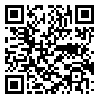BibTeX | RIS | EndNote | Medlars | ProCite | Reference Manager | RefWorks
Send citation to:
URL: http://jcpp.iut.ac.ir/article-1-2464-en.html
The market sales of ready to use fresh cut fruits have grown rapidly in recent decades. Kiwi fruit is an important fruit that its marketing as fresh cut has increased in recent years. The main limiting factors in shelf life of fresh cut fruits are microbial spoilage, drastic softening and browning. In this study, the effects of oxalic and citric acids, both at 0, 2, 4 and 6 mM concentrations, with or without ultra-sonic treatment were investigated on the increasing the shelf life of fresh cut kiwi fruit. After treatments, the fresh slices were stored at 2°C for 7 or 14 days and assessed for several traits and analyzed. Results showed that, oxalic and citric acid treated slices, in comparison to the control, had greater marketability, as well as higher flesh firmness, titrable acidity, ascorbic acid content, total phenol content and antioxidant capacity and smaller bacterial forming colony unit (CFU). Among the treatments, 2, 4 and 6 mM oxalic acid and 6 mM citric acid treatments were found more appropriate than the reaming treatments. Application of ultra-sonic treatment, despite the reduction of microbial load and maintaining antioxidant capacity, had no effects on marketability of fresh cut kiwi fruit. Hence, application of organic acid treatments as dipping can be used to increase the shelf life of fresh cut kiwi fruit.
| Rights and permissions | |
 | This work is licensed under a Creative Commons Attribution-NonCommercial 4.0 International License. |







